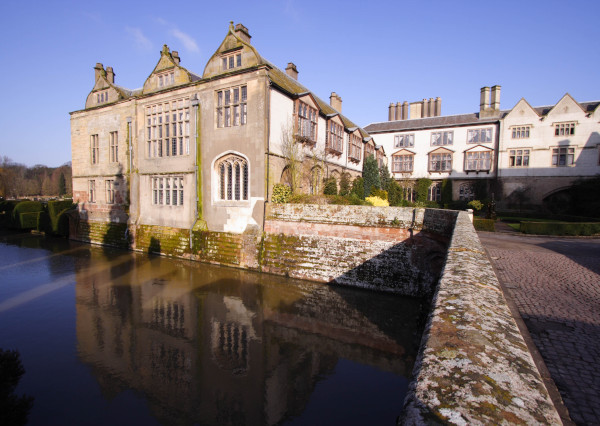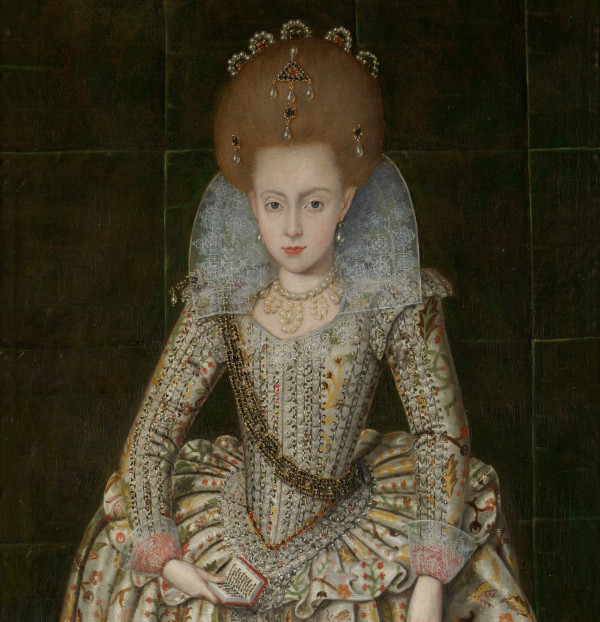
Think of the Gunpowder Plot and you think of the men involved. Yet, as Nicola Cornick explains, that’s a mistakenly narrow view; we need to take into account the role and influence of the women in the family networks which bound the plotters together just as much as their Catholic faith did.
The Gunpowder Plot of 1605, a failed attempt to blow up parliament and assassinate King James I of England, often feels like a very male-dominated affair. It was a man, Robert Catesby, who was the driving force of the plot and who recruited the other (male) conspirators. It was another man, Guy Fawkes, whose name has become primarily associated with the plot in the centuries that followed.
When the BBC made its three-part drama Gunpowder five years ago, based on the events of the plot, there was one main female character, Anne Vaux, whose role was significantly increased to give balance to the story for a modern audience.
It’s certainly the case that if you look at the Gunpowder Plot solely in terms of action it is an all-male event, as one might expect in an era when women’s agency and activity was far more circumscribed.
However, if you look at the wider context of the Plot – and indeed it needs to be placed in a much larger historical perspective – then one of things that is striking is the network of family connections that binds the Gunpowder Plot families together and the role and influence of women within these.
I write books that focus on women from the footnotes of history so the idea of the women whose lives were affected by the Plot appealed to me and in my latest novel, The Winter Garden, I set out to explore this topic.
One of the major influences on the Gunpowder Plot was, of course, Queen Elizabeth I. Dead by the time that the plot occurred, she had nevertheless set the train the reversal of her sister Mary’s Catholic revival. At first prepared to let this die a slow death by “gradually starving the Catholic community of its sacraments”, to quote historian Jessie Childs, she faced the threat posed by her cousin Mary, Queen of Scots in whose name a number of plots against her were launched.
By the end of her reign in 1603 Catholic recusants – those who refused to attend Protestant church services – were under constant surveillance and facing huge financial penalties and imprisonment for practising their faith.

This was the environment in which many of the plotters had grown up; Robert Catesby, for example, was born in about 1572, and knew nothing other than this climate of persecution of Catholics for his entire life. Inevitably this must have been extraordinarily formative, as was the equally fierce adherence to their faith of the Catholic families in response.
One woman who seems indubitably to have had a strong influence on Robert Catesby’s life was his wife, Catherine. Born Catherine Leigh of Stoneleigh Abbey in Warwickshire, she came from a wealthy Protestant family that had made its money in trade two generations before. Her dowry of £2000 was a considerable fortune.
Catherine and Robert married in 1593 and went to live at Chastleton in Gloucestershire, an estate Robert inherited from his grandmother. They had two sons, the first of whom died young but the second of whom flourished. Significantly, Robert became what was known as a “church papist,” a Catholic who was, for pragmatic reasons, prepared to profess Protestantism in his public life.
Had Catherine lived, Robert Catesby’s life might have run a very different course. However, her death in 1598, the same year that Robert’s father also died seems to have propelled him back to a far more radical Catholicism, which became all-consuming.
Robert Catesby’s mother Anne was from the Throckmorton family, another staunchly Catholic gentry family. Her sister Muriel married Sir Thomas Tresham and their son Francis was one of the Gunpowder Plot conspirators.
The Wintour, Wright, Grant, Vaux, Digby and Rookwood families were all connected through marriage and knowledge of the plot was widespread through this network; in September 1605 a number of them made a pilgrimage to the holy well of St Winefride in Wales.
They included Sir Everard Digby and his wife Mary. Mary is recorded as having spoken of the plot to Anne Vaux, asking where Anne and Father Garnet, a Catholic priest, would “bestow themselves until the brunt was past in the beginning of the Parliament.” Anne said she “feared these wild heads had something in hand” and begged Father Garnet “for God’s sake to talk with Mr Catesby and to hinder anything that possibly he might.”
From exchanges such as this it is clear that knowledge of the plot was widespread amongst the families of the plotters and indeed after the failed coup, Anne Vaux herself was imprisoned and questioned. A number of other wives, sisters and mothers were also suspected and interrogated. Their families were also financially penalised with the confiscation of the traitors’ estates. Anne Catesby, through determined petitioning, was able at least to protect her own marriage settlement from Robert’s father, Sir William Catesby, to hand on to her grandson Robert.

One woman whose life would have been changed forever had the Gunpowder Plot succeeded, was Princess Elizabeth, daughter of King James and Anne of Denmark. A child of nine at the time of the plot, it was she whom the plotters intended to kidnap and place on the throne as titular queen after her father and elder brother were killed.
This was act two of the Gunpowder plot — a group of Catholic gentlemen, under the guise of a hunting party, would arrive at Coombe Abbey, the house in the Midlands where Elizabeth was in the care of Lord and Lady Harington, and carry her off.
However, when the gunpowder was discovered and Fawkes arrested, Elizabeth was whisked away to safety in the town of Coventry.
She later said: “What a Queen should I have been by this means? I had rather been with my royal father in the parliament house than wear the crown on such condition.” Elizabeth was to be a committed Protestant all of her life and, by a twist of fate, the grandmother of George I.
In The Winter Garden I explore in fictional form the ways in which the Gunpowder Plot of 1605 was influenced by and affected the lives of the women of these inter-connected families. The effects were far-reaching indeed.
The Winter Garden by Nicola Cornick was published by Graydon House in the US on 25th October, 2022 and by HarperCollins HQ in the UK on 27th October, 2022.
See more about this book.
Read Historia’s interview with Nicola Cornick.
Nicola Cornick is a bestselling author of dual-time mysteries and a historian specialising in public history. She works as a guide and researcher for the National Trust and is a trustee of the Friends of Lydiard Park and the Wantage Literary Festival. In her spare time, she raises guide dog puppies.
Images:
- The execution of the eight surviving conspirators of the Gunpowder Plot in 1606 in London, etching with engraving by Claes Jansz Visscher: Wellcome Collection (public domain)
- Detail from Two Views of Westminster by Wenceslaus Hollar, 1647: University of Toronto Wenceslaus Hollar Digital Collection via Wikimedia
- Coombe Abbey, Warwickshire: author’s own photograph
- Coughton Court, east view: DeFacto for Wikimedia (CC BY-SA 4.0)
- Princess Elizabeth (later Queen of Bohemia) by Robert Peake the Elder, c1606: Metropolitan Museum (public domain)







